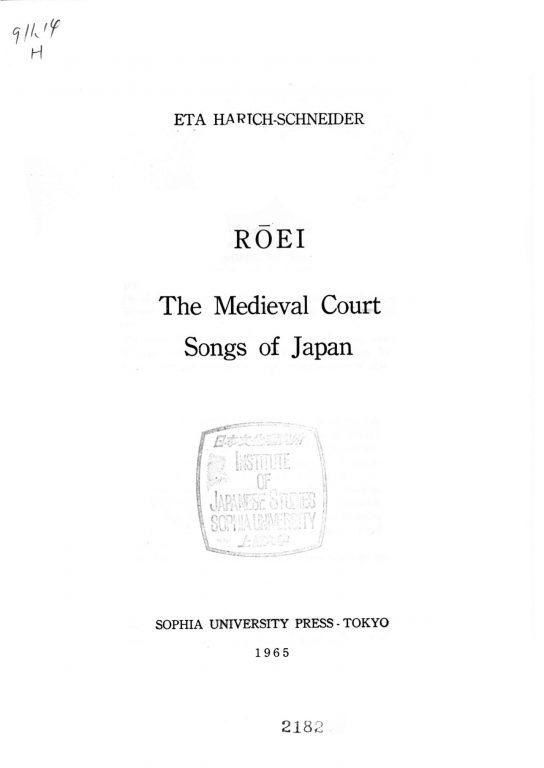Rōei: The Medieval Court Songs of JapanEta Harich-Schneider
Monographs (1965) pp. 1–132
Many types of vocal music existed in medieval Japan, such as kagura, saibara, azuma-asobi, fūzoku-uta, rōei, imayō, kada. Rōei, imayō, and kada originated during the Heian period; in earlier sources they are comprised under the collective title eikyoku, “vocal compositions”, in contrast to the much older types of kagura, saibara and azuma-asobi which stem from the most ancient folk songs.
The eikyoku were extremely numerous and enjoyed greatest popularity at the Heian court. Particularly the art of improvising rōei was one of the favorite pastimes.
The name rōei is of Chinese origin and is mentioned in the Wen-chuan (Jap. Monzen) and the Pai-shih Wen-chi (Jap. hakushi-monjū). The meaning is: to sing joyfully with a loud voice. With reference to a specific type of literary and musical pastime in Japan the term seems to have been first used by Fujiwara Kintō. In contrast to waka, which are poems in Japanese style, rōei are exclusively vocal pieces on texts from the Chinese, or texts deliberately imitating the various Chinese literary styles.
132 pages.
Paperback. [Out of print]
